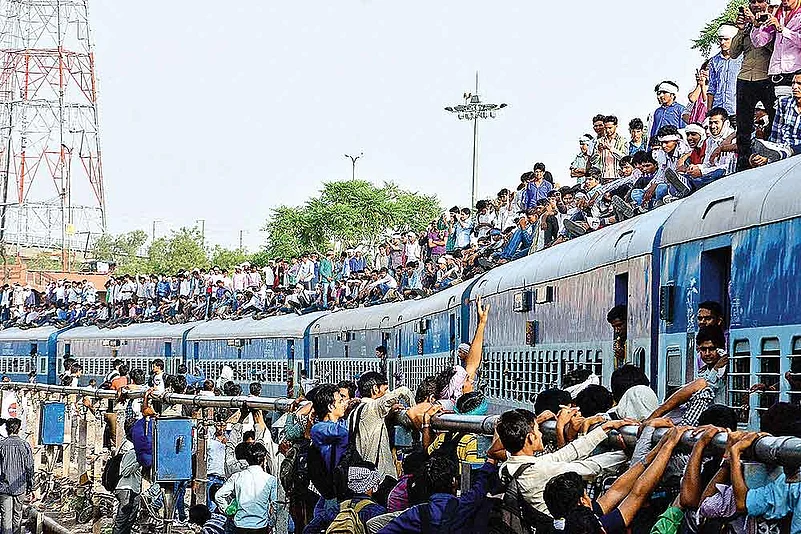The Budget’s limited paragraphs on Indian Railways (IR) are sufficient indicators of important changes on the anvil. The all-time-high investment of Rs 146,500 crore in IR, projected for 2018-19, is financed by substantial commercial borrowing of Rs 54,940 crore (37.5 per cent). This is double the sum of Rs 25,744 crore which was borrowed in 2016-17 and which came to 23 per cent of planned spending. This change must be evaluated against several critical trends that face IR today.
The top line of the Railways is threatened by failure to match the changing consumer profile. The conventional passenger services do not meet the expectations of reserved accommodation passengers, who are gradually sliding en masse to air and luxury bus travel. This is facilitated all the more by state-of-the-art expressways and schemes like UDAAN, modern facilities at airports etc. The unreserved high-volume, low-revenue passengers are also far from satisfied with the exposure to dust, heat and cold travel conditions, and are not happy to pay more for the service. Thus, the passenger services, a major breadwinner for the Railways, are hovering at a bit over Rs 50,000 crore, reflecting a low growth of less than four per cent in passenger earnings in the 2018-19 budget estimate.
Coming to freight business, though the Railway Board does satisfactorily in tonnage management, in the more important lead (distance hauled/ travelled) management, they appear to have been pipped by CIL, the coal and power ministries and electricity boards, and also by states in minerals. Commodity leads tumbled downwards by more than 100 km. Thus, despite an increase in loading, the growth in freight revenues projected is less than four per cent in 2018-19.
With two core sectors, accounting for 87 per cent of top-line revenues, reflecting such poor growth, the increase in commercial borrowing needs close monitoring for efficacy. A related trend that is out of sync is project delivery. The freight model was to be driven by dedicated freight corridors (DFC). A meaningful start is nowhere in sight. Priority completion and commissioning of even 100 km stretches, running parallel to the main lines, would have given IR a business lead. In 2006-07, the Board had planned a phased implementation of DFC. An early start will give credibility to the project and help create the investor confidence needed to build logistics around rail.
What applies to DFC also applies to the large shelf of projects opened across IR. The delay in implementing most of them is partly due to the thin spread of funds, the un-remunerative nature of the projects, and lack of sharp monitoring. This poses a serious concern when we consider the manner in which coal-traffic-related lines are also languishing. Paragraph 84 of the FM’s budget speech highlights the personal monitoring of projects by the PM. IR needs to leverage this and address on a war footing the lag in all revenue-critical projects in order to save the static top line revenues. This is particularly necessary for commodities like coal and ores, where there is a serious threat of logistics building itself around inland waterways and coastal shipping due to the Railways’ lack of alacrity .
The heavy reliance on other earnings—land-related revenues, advertisement etc.—is pitched at Rs 20,790 crore. Clear-cut, approved policies will be needed for real results. The real estate value at and near railway stations has been seriously impacted by the shift of central business districts to less congested areas.
Another concern is the failure of the organisation to tackle the political leadership on fare increases. The much-touted benefit of containing and reducing traction costs is far from evident in the numbers. It is good that the excellent ideas of the Shivir have found roots in the introduction of AC coaches to the Mumbai Suburban Railway. But unfortunately, the business model is once again missed. The tariff should be linked to the dominant form of urban transport; that is, the Metro, rather than the Railways’ tariff table. Nonetheless, one hopes to see this as a trigger for future rationalisation in the rail passenger business, on the theme of giving better services and charging realistic fares.
(The author is a former financial commissioner (Railways) and ex officio secretary to the Government of India)
















